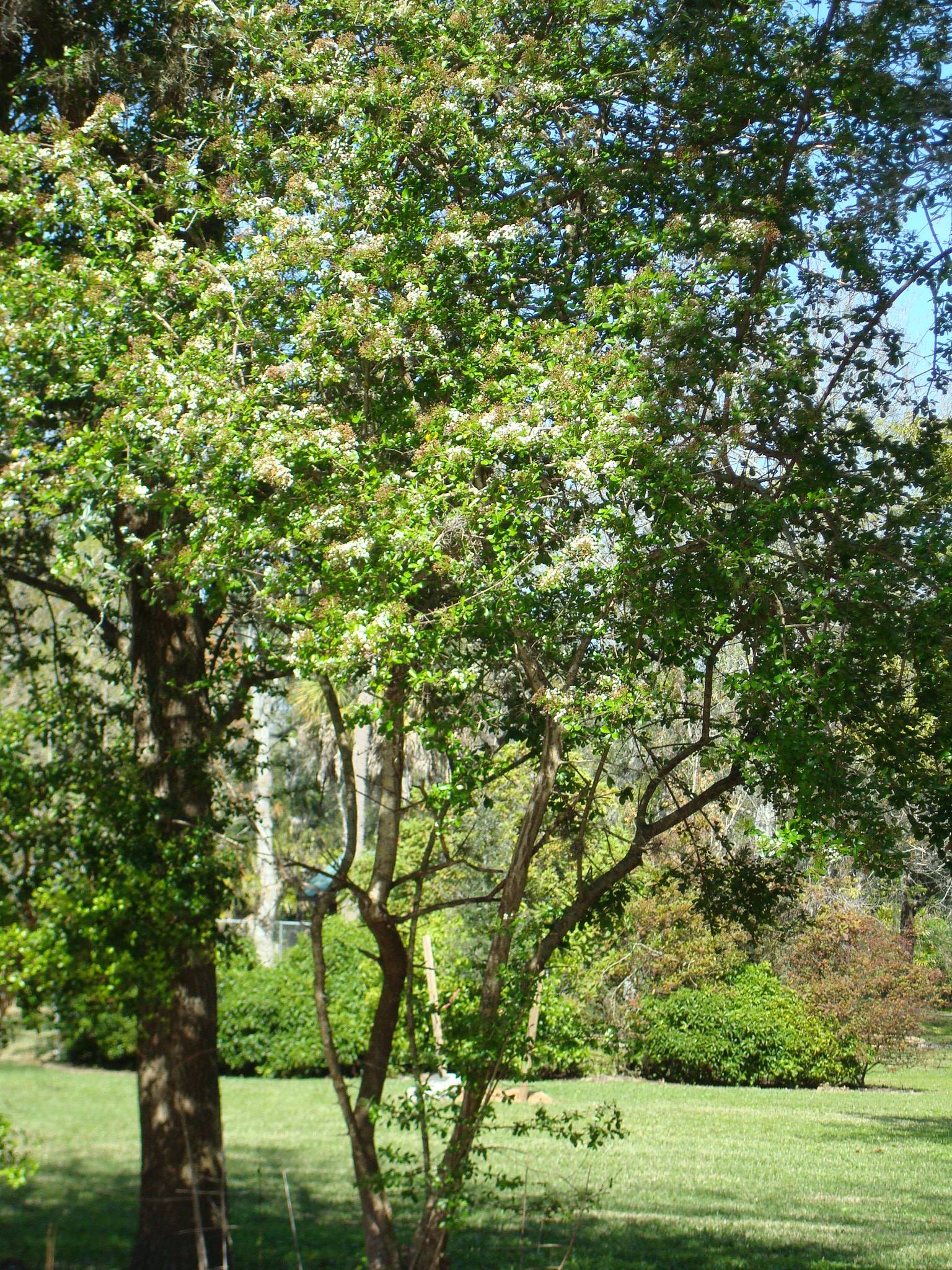Walter’s Viburnum is a Florida native with several cultivars including dwarfs, shrubs and tree forms that can be a beautiful addition to any landscape. There are different cultivar forms available including several dwarf forms. These cultivars can be grown upright, spreading or compact, with shorter heights. You have to know the original source of the plant material to determine the final height and width of the plant. Your local nursery will be able to inform you about the characteristics of their variety of Walter’s viburnum plant.
Walter’s ‘Withlacoochee’® Viburnum is the very best Viburnum for Central and North Florida’s mild climate due to its delightful growth habit and superior features. ‘Withlacoochee’® tends to hold more of its leaves even in mid-winter. It can be grown anywhere between 7a-10b U.S.D.A. zones.
All Walter’s viburnum has a smooth bark and is typically multi-trunked in the wild. In the home setting though, gardeners can prune the Viburnum obovatum to create a single trunk tree. The twigs and stems are gray or silver in color. The leaves are unique, glossy and dark green which turns maroon in winter. The plant is covered with white blooms for about two or three weeks in winter or spring that attract butterflies, birds and other wildlife. These flowers occur in small, convex cymes that grow at the branch tips. The fruits of Walter’s viburnum plant are small drupes that go from red to black as they ripen.
Walter’s ‘Withlacoochee’® Viburnum Habitat
‘Withlacoochee’® Viburnum will grow to about 17 ft x 18 ft in a medium growth rate and it highly adapted to a range of average soils and light conditions it can even tolerate short periods of flooding. Walter’s viburnum has good drought tolerance properties but it may suffer occasional dieback in extreme drought.
It flowers well in full sun or even in part shade and tolerates a range of different soil types from moist-to-wet sites. When established it grows in normal landscape situations without even having to be watered. But it does need frequent watering for the first six months to 12 months after planting so that it can sink deep roots.. This Florida native is a low-maintenance plant. All it needs is regular pruning to get rid of root suckers.
The ‘Withlacoochee’® grows uniformly and does not shoot up “leggy” as many of many of the other Viburnum species. In its early growth phase many small blooms show up near the base of the plant as foliage develops. ‘Withlacoochee’® grows 6-10″ spikes before filling out and growing new spikes. Once the ‘Withlachoochee’® reaches its full height, the focus turns to blooms, as snowy white flower clusters fill up the branches, signalling the end of winter.
Walter’s viburnum makes an excellent choice for wildlife, pollinator-friendly or bird garden. Butterflies sip nectar from the mass of white flowers in spring, and its autumn drupes attract birds and wildlife. Its great branching structure and density makes it ideal for shelter and favorite bird nesting site for cardinals and other song birds.
Walter’s ‘Withlacoochee’® Viburnum Usage
Walter’s viburnum is a beautiful shrub with rounded form and broad spreading crown. Clip the plant as desired or let it grow wild as it will not spurt up in an unruly fashion. Walter’s viburnums can be grown in colonies to form a native species hedge or screen or even as a single small tree. When left to its natural growth pattern it grows quite dense but it suitable for hedges or topiary. For it to work as a hedge or a flowering hedge, it needs to be pruned two or three times a year. Begin trimming after flowering in March and again no later than August.



